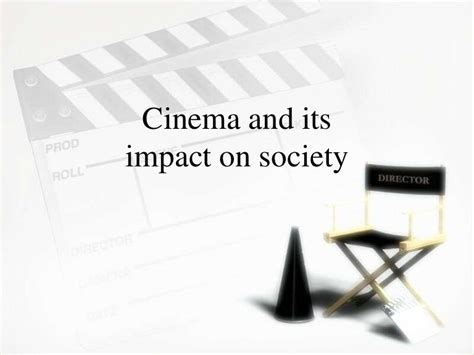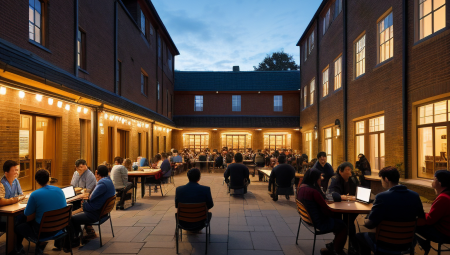Lights, camera, action! The world of filmmaking is a captivating and dynamic industry that has the power to shape culture and drive change in society. From the early days of silent films to the modern era of blockbuster hits, the art of cinema has evolved and continues to mesmerize audiences around the globe. In this blog post, we will embark on a creative journey through the world of filmmaking, exploring the various aspects that come together to create a successful film. From the role of directors in bringing a vision to life, to the impact of music and sound design, and the technical wizardry of special effects, we will delve into the intricate and fascinating world of filmmaking. Join us as we unravel the art of crafting a compelling story, the importance of cinematography, and the power of acting, and discover how cinema serves as a reflection of society, shaping culture and driving change.
Table of Contents
Introduction to Filmmaking: A Creative Journey
Filmmaking is a captivating and dynamic art form that allows creators to express their creativity and tell compelling stories through the medium of film. From the creation of the very first motion picture to the modern blockbusters that dominate the box office, filmmaking has evolved into a complex and interdisciplinary art form that requires a diverse set of skills and talents.
At its core, filmmaking is a collaborative process that involves a wide range of talented individuals, including writers, directors, actors, cinematographers, and sound designers, all working together to bring a story to life on the screen.
The creative journey of filmmaking begins with the initial spark of an idea, which is then developed into a script or screenplay. This foundational stage is crucial, as it crafts the blueprint for the entire film and sets the tone for the creative vision.
As the project moves forward, filmmakers must navigate through the various stages of production, from casting the right actors to capturing the perfect shot with the help of skilled cinematography. The process continues through post-production, where the magic of editing, sound design, and visual effects come together to create a seamless and immersive movie experience for audiences.
Evolution of Cinema: From Silent Films to Modern Blockbusters
The evolution of cinema from silent films to modern blockbusters has been a remarkable journey that has transformed the way we experience storytelling on the big screen. In the early 1900s, the era of silent films marked the beginning of a new form of entertainment that captivated audiences with visual storytelling without the use of synchronized sound. These pioneering works laid the foundation for the development of modern cinema, paving the way for the innovative art of filmmaking that we know today.
As technology advanced, the introduction of sound revolutionized the film industry, giving rise to the golden age of Hollywood and marking a significant milestone in the evolution of cinema. The ability to incorporate dialogue, music, and sound effects enhanced the cinematic experience, allowing filmmakers to immerse audiences in the storytelling process and evoke powerful emotional responses.
With the advent of color film, the visual spectrum of cinema expanded, adding a new dimension to storytelling and opening up endless creative possibilities for filmmakers. The transition from black and white to color films transformed the cinematic landscape, captivating audiences with vibrant and visually stunning narratives that brought stories to life in vivid detail.
Today, the evolution of cinema has culminated in the era of modern blockbusters, where state-of-the-art visual effects, immersive sound design, and compelling storytelling combine to create larger-than-life cinematic experiences that enthrall audiences around the world. From superhero epics to science fiction adventures, modern blockbusters push the boundaries of filmmaking, showcasing the incredible technological advancements that have propelled cinema into a new era of innovation and spectacle.
Crafting a Compelling Story: The Foundation of a Successful Film
Crafting a compelling story is an essential element in creating a successful film. The storyline serves as the foundation upon which every other aspect of the film is built. It is the core of the film that captivates the audience and keeps them engaged from beginning to end. Without a strong and well-crafted story, even the most impressive visuals and special effects will fall flat.
From the rise of action-packed blockbusters to the intimate dramas that pull at the heartstrings, it is the storytelling that resonates with the audience and leaves a lasting impact. A compelling story has the power to inspire, provoke thought, and evoke emotional responses, making it a vital component in the creation of a memorable film.
In crafting a compelling story, it is important to develop well-defined characters, build tension and conflict, and create a narrative that draws the audience in from the very beginning. The ability to weave together different plotlines and subplots while maintaining coherence is a skill that sets great films apart from the rest.
Ultimately, a successful film is one that leaves a lasting impression on its audience, and this can only be achieved through the careful crafting of a compelling story. It is the heart and soul of the film, driving the action, guiding the audience through a journey, and ultimately delivering a powerful and memorable experience to all who watch.
The Role of Directors: Bringing the Vision to Life
Directors play a pivotal role in the filmmaking process, as they are responsible for bringing the vision of the film to life. They are the creative masterminds behind the scenes, overseeing every aspect of the production and guiding the cast and crew to achieve their artistic vision. From the initial concept to the final edit, directors are involved in every step of the process, making critical decisions that shape the final product.
One of the key responsibilities of a director is to collaborate with the screenwriter and producers to develop a cohesive vision for the film. They work closely with the creative team to ensure that the story, characters, and overall tone are effectively communicated on screen. Through their leadership and direction, directors set the artistic direction of the film and guide the actors in bringing their characters to life.
In addition to their creative input, directors also oversee the technical aspects of the production, working closely with the cinematographer, production designer, and other key crew members to create a visually stunning and cohesive film. They are involved in every aspect of the filmmaking process, from scouting locations to coordinating complex action sequences, ensuring that every shot aligns with their artistic vision.
Ultimately, the role of directors is to bring the script to life, infusing it with their unique creative vision and ensuring that every element of the film contributes to a cohesive and compelling narrative. Their leadership and artistic direction are essential in the success of a film, shaping the final product and guiding the audience on an immersive cinematic journey.
Lights, Camera, Action: The Importance of Cinematography
Cinematography is an essential element of filmmaking that cannot be overlooked. It encompasses the art and technique of capturing moving images on film or a digital medium, and it plays a crucial role in shaping the visual identity of a film. The choices made by the cinematographer in terms of lighting, framing, and camera movement can greatly impact the overall look and feel of a movie.
Lighting is perhaps the most fundamental aspect of cinematography. The way a scene is lit can set the tone and mood, convey emotions, and draw the viewer’s attention to specific elements. Whether it’s natural light, artificial light, or a combination of both, the cinematographer must carefully consider how to use light to enhance the storytelling and create a visually engaging experience.
Framing is another critical component of cinematography. The composition of each shot, the placement of the subjects within the frame, and the use of different camera angles all contribute to the visual narrative. A well-crafted frame can draw the audience into the world of the film and guide their focus towards the most important elements within the scene.
Camera movement adds another layer of complexity to cinematography. The way the camera moves through a scene can convey a sense of urgency, intimacy, or expansiveness. Whether it’s a dynamic tracking shot, a steady handheld sequence, or a carefully choreographed crane movement, the choices made in camera movement can significantly impact the audience’s emotional response to the story.
Captivating the Audience: The Power of Acting
Acting is a powerful tool that has the ability to captivate and move audiences in ways that few other art forms can. Whether it’s on stage or on screen, the skillful portrayal of characters can create a deep emotional connection with viewers, eliciting strong reactions and leaving a lasting impact.
Acting is not just about reciting lines or performing actions—it’s about embodying a character and bringing them to life in a way that feels real and authentic. A talented actor can make the audience forget that they are watching a performance, drawing them into the story and making them believe in the world that has been created.
The power of acting lies in its ability to evoke empathy and understanding. Through their performances, actors can shine a light on the human experience, portraying a wide range of emotions, struggles, and triumphs that resonate with viewers on a personal level.
Ultimately, the power of acting lies in its ability to transport audiences to different worlds, to make them feel, think, and reflect. Whether it’s through a thought-provoking drama, a heartwarming comedy, or an intense action-packed thriller, the skillful portrayal of characters has the potential to leave a profound impact on those who experience it.
Behind the Scenes: The Art of Film Production
When we watch a movie, we often don’t realize the amount of work that goes into its production. From the initial concept to the final cut, the art of film production is a complex and intricate process that involves numerous steps and a dedicated team of individuals.
One of the most important aspects of film production is pre-production, where the groundwork for the film is laid. This includes tasks such as developing the script, scouting for locations, casting actors, and creating a budget. The pre-production stage sets the stage for the entire filming process and requires meticulous planning and organization.
Once pre-production is complete, the actual filming takes place during the production phase. This involves capturing the scenes that bring the story to life, and it requires coordination between the director, cinematographer, actors, and crew. The production phase is often fast-paced and intense, but it is also where the magic happens as the vision of the film begins to materialize.
After the filming is complete, the film enters the post-production phase, where the raw footage is edited, sound is added, and special effects are integrated. This is where the film truly comes together, and the final touches are put in place to create a polished and cohesive product. Post-production requires technical expertise and a keen eye for detail to ensure that the film meets the director’s vision.
The Impact of Music and Sound Design in Film
When it comes to creating a powerful and memorable film, the impact of music and sound design cannot be overstated. Both of these elements play a crucial role in evoking emotions, setting the tone, and enhancing the overall cinematic experience for the audience. The right music can elicit a range of feelings, from excitement to sadness, while sound design is responsible for creating a sense of immersion and realism within the world of the film.
Music has the ability to manipulate our emotions and guide our interpretation of the events on screen. It can build tension during suspenseful moments, add an extra layer of depth to character development, and create a lasting impression of specific scenes or sequences. In fact, some of the most iconic movies are often remembered for their unforgettable musical scores that have become synonymous with the film itself.
Sound design, on the other hand, focuses on the creation of ambient sounds, dialogue, and special effects to enhance the auditory experience of the audience. This aspect of filmmaking is equally important as it helps to transport the viewer into the world of the film, making the entire experience more immersive and captivating. From the subtle rustling of leaves in a peaceful countryside to the explosive chaos of a high-speed chase, sound design adds a layer of complexity to the storytelling that goes beyond the visual aspect of the film.
In conclusion, the impact of music and sound design in film is undeniable. These elements have the power to elevate the narrative, evoke emotions, and leave a lasting impression on the audience. When executed effectively, they work in tandem with the visuals to create a truly immersive and unforgettable cinematic experience.
Unveiling the Technical Wizardry: Special Effects and Visuals
Special effects and visuals have always been a crucial element of captivating and mesmerizing audiences in the world of cinema. From the early days of filmmaking to the modern era, the evolution of special effects has taken viewers on unforgettable journeys through imaginative worlds and breathtaking spectacles.
The wizardry of special effects is a testament to the boundless creativity and technical expertise of filmmakers and visual artists. With the advent of computer-generated imagery (CGI), the possibilities for creating awe-inspiring visuals have expanded exponentially, allowing filmmakers to push the boundaries of reality and immerse audiences in fantastical realms.
From the groundbreaking practical effects of classic films to the seamless integration of CGI in contemporary blockbusters, the art of visual storytelling continues to push the envelope and redefine what is achievable on the silver screen. The mastery of visual effects not only enhances the narrative of a film but also transports viewers to worlds beyond their imagination, leaving a lasting impression that lingers long after the credits roll.
Ultimately, the technical wizardry of special effects and visuals serves as a testament to the transformative power of cinema, capturing the imagination and inspiring awe in audiences around the world.
Cinema as a Reflection of Society: Shaping Culture and Driving Change
Throughout history, cinema has played a significant role in shaping culture and driving change. Films have the power to reflect the values, beliefs, and societal issues of a particular time and place, providing audiences with a window into the world around them. From the early silent films to the modern blockbusters, cinema has been a powerful tool for sparking conversations, challenging norms, and inspiring social movements.
One of the ways in which cinema reflects society is through its portrayal of social and political issues. Many films serve as a commentary on the pressing matters of the time, shedding light on inequality, discrimination, and other significant social challenges. Through compelling storytelling and powerful visuals, filmmakers are able to bring attention to these issues, provoking thought and discussion among viewers.
Moreover, cinema has the ability to influence cultural norms and behaviors. The portrayal of diverse characters, relationships, and lifestyles in films can lead to greater acceptance and understanding within society. By seeing themselves represented on screen, individuals are empowered and validated, leading to a more inclusive and open-minded culture.
Overall, cinema has the unmatched ability to shape societal attitudes, beliefs, and actions. As both a reflection of the present and a driver of change, films have the power to ignite conversations, challenge perspectives, and inspire movements that drive forward progress and social transformation.





